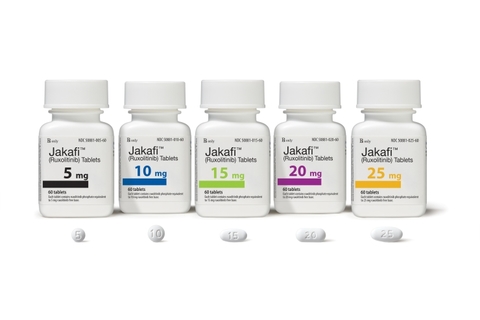We have This ..............................................................................Novartis will make a $25 million upfront payment and invest $25 million in Mesoblast equity with additional payments and royalties due on achievement of agreed development, regulatory and commercial milestones. In addition, Novartis will provide certain support to enable commercial manufacturing scale-up. Novartis has the option, if exercised, to distribute remestemcel-L for graft versus host disease (GVHD) (outside Japan). Both parties have rights to co-fund development and commercialization for other non-respiratory indications. The closing of the license agreement is subject to the expiration or termination of the waiting period under the Hart-Scott-Rodino Antitrust Improvements Act and certain other conditions................................................................Now we have This , Interesting how both will be Managed by Novartis ...............................................................................
ASH: Incyte, Novartis eye Jakafi approval after chronic graft vs. host win
by Carly Helfand |
Dec 5, 2020 2:20am
Jakafi won its acute graft vs. host approval in May, 2019.
ShareFacebookTwitterLinkedInEmailPrint
Incyte and Novartis’ Jakafi already boasts an indication in acute graft vs. host disease (GVHD), thanks to an approval last year. But it’s also eying a nod in the chronic form of the disease—and it may just have the data to get it done.
In a randomized phase 3 study—the first ever in chronic GVHD to come up successful—49.7% of Jakafi patients were responding at the 24-week mark. That's significantly higher than the 25.6% of patients in the control arm, which tapped a group of so-called best available therapies.
All of the patients had already failed on steroids, considered the “mainstay of treatment” in both acute and chronic GVHD, Peter Langmuir, Incyte VP of oncology drug development, said. They’d either responded “a bit” but seen their condition continue to worsen, or they hadn’t responded to steroid treatment at all.
RELATED: Novartis, Incyte's Jakafi boosts its case in graft-versus-host disease with another phase 3 win
The study, called Reach3 and presented over the weekend at the American Society of Hematology virtual annual meeting, also hit a few key secondary endpoints. More than 76% of Jakafi patients responded at some point during the 24-week period, versus 60.4% of patients on investigators’ choice of treatment.
The drug also significantly improved failure-free survival—defined as the amount of time until disease recurred, the patient started a new systemic treatment, or the patient died—and spurred patient-reported symptom improvements, too.
The win is a big one for Novartis and Incyte, considering how few advances the chronic GVHD field has seen in recent years. Less than 20% of chronic patients see lasting benefits a year after initial steroid therapy, said John Tsai, M.D., Novartis’ chief medical officer.
Historically, many agents have had “anecdotal reports that look promising, but when you end up doing properly controlled trials, things don’t work out that well,” Incyte’s Langmuir added.
RELATED: Incyte's faithful Jakafi—and its sales force—are ready to roll with new indication
Next up for the partners? Getting the data to regulators as soon as possible. If they can eventually score a green light, it’ll follow up on last May’s FDA go-ahead in acute GVHD—a “different disease related to the same basic pathogenesis,” Langmuir said.
While both conditions arise after stem cell transplants and involve donor T cells reacting against the host body, chronic GVHD tends to develop more slowly than acute GVHD and “can lead to a lifetime of complications,” Langmuir said. Those complications can be fatal, but in many cases, they just “lead to substantial morbidity for patients,” whose lungs, gastrointestinal systems, muscles and joints and mucus membranes may be affected.
And chronic GVHD has the potential to be a bigger indication for Jakafi, a blockbuster and the pioneering member of the JAK inhibitor class. There are about 1,500 new steroid-refractory cases in the U.S. each year, Langmuir said, but Incyte believes about 14,000 patients in the country are right now suffering from the condition.
Acute disease also “tends to be fairly limited” compared with chronic GVHD. “People don’t live with acute for very long,” Langmuir pointed out. “It either is fatal or gets better or becomes chronic.”
- Forums
- ASX - By Stock
- MSB
- Ann: Remestemcel-L FDA Fast Track Designation for COVID-19 ARDS
Ann: Remestemcel-L FDA Fast Track Designation for COVID-19 ARDS, page-523
-
- There are more pages in this discussion • 50 more messages in this thread...
You’re viewing a single post only. To view the entire thread just sign in or Join Now (FREE)
Featured News
Add MSB (ASX) to my watchlist
 (20min delay) (20min delay)
|
|||||
|
Last
$1.49 |
Change
0.140(10.4%) |
Mkt cap ! $1.701B | |||
| Open | High | Low | Value | Volume |
| $1.37 | $1.54 | $1.37 | $23.10M | 15.82M |
Buyers (Bids)
| No. | Vol. | Price($) |
|---|---|---|
| 3 | 24758 | $1.49 |
Sellers (Offers)
| Price($) | Vol. | No. |
|---|---|---|
| $1.49 | 73626 | 3 |
View Market Depth
| No. | Vol. | Price($) |
|---|---|---|
| 3 | 24758 | 1.485 |
| 5 | 59100 | 1.480 |
| 4 | 60253 | 1.475 |
| 3 | 35489 | 1.470 |
| 1 | 34513 | 1.465 |
| Price($) | Vol. | No. |
|---|---|---|
| 1.490 | 73626 | 3 |
| 1.505 | 29500 | 2 |
| 1.510 | 41232 | 6 |
| 1.515 | 123153 | 3 |
| 1.520 | 81763 | 5 |
| Last trade - 16.10pm 04/10/2024 (20 minute delay) ? |
Featured News
| MSB (ASX) Chart |










